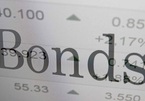 |
This information was part of the latest report of the Asian Development Bank’s (ADB) Asia Bond Monitor.
The report shows Vietnam’s growth was mainly on the back of the 3.2 percent expansion of the Government bond market to 48 billion USD due to issuance of Treasury bonds and central bank bills.
“The growth in the Government bond market offset the 3.4 percent contraction of the corporate bond market during the second quarter of 2019 to 5 billion USD,” the report said.
According to the report, emerging East Asia’s local currency bond market expanded steadily in the second quarter of 2019 despite downside risks stemming from ongoing trade conflicts, a faster-than-expected economic slowdown in the People’s Republic of China (PRC), and moderating global growth.
Emerging East Asia countries and territories comprises of Hong Kong, China; Indonesia; the Republic of Korea; Malaysia; the Philippines; Singapore; Thailand and Vietnam.
ADB Chief Economist Yasuyuki Sawada said foreign investment in emerging East Asia remains stable but there are still considerable potential risks. Financial stability in the region could be undermined if global investors change their views on emerging markets.
“Governments in the region would do well to continue to deepen local currency bond markets so they can act as a reliable local source of funding,” Sawada.
Local currency bonds outstanding in emerging East Asia totalled 15.3 trillion USD at the end of June, up 3.5 percent in US dollar terms from the end of March this year and 14.2 percent higher than the end of June 2018. Bond issuance in emerging East Asia totalled 1.6 trillion USD in the second quarter, 12.2 percent higher than in the first quarter due to strong issuance of government bonds and a recovery in corporate bonds issuance.
The PRC remained emerging East Asia’s largest bond market, accounting for 75.3 percent of the region’s total outstanding paper.
At the end of June, there were 9.4 trillion USD in local currency government bonds outstanding, 13.6 percent higher than at end June 2018. The stock of corporate bonds was 5.8 trillion USD, up 15 percent compared with end June 2018./. VNA/ADB

Who are the buyers of bank bonds?
Forty percent of bonds issued by banks are bought by securities companies, but analysts believe that the real bond holders are commercial banks.

VN banks, securities firms step up bond purchases
A recent study by SSI Securities Corporation found that banks and securities companies acquired a large volume of bonds in the January-August period of this year.

VN banks told to be careful with corporate bonds
Commercial banks’ purchase of real estate corporate bonds is considered indirect lending to real estate firms, experts say.
 Vietnam’s local currency bond market grew 2.6 percent to 52.9 billion USD in the second quarter of this year, after a 0.7 percent expansion in the first quarter.
Vietnam’s local currency bond market grew 2.6 percent to 52.9 billion USD in the second quarter of this year, after a 0.7 percent expansion in the first quarter.